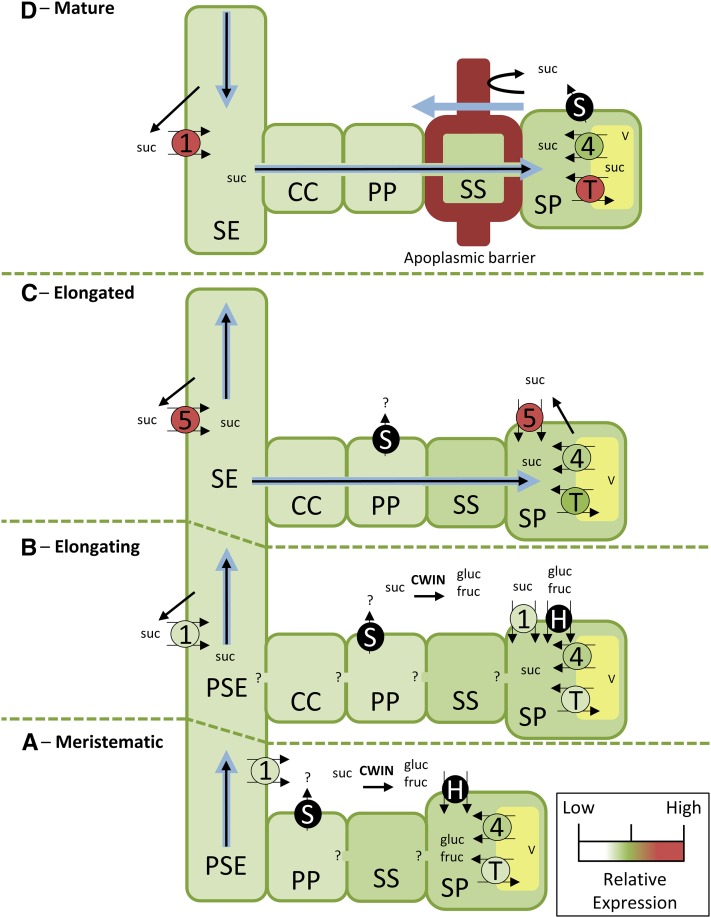Figure 7.
Predicted pathways and mechanisms of Suc unloading in elongating, recently elongated, and mature zones of Sorghum internodes. Bulk flow of photoassimilates is likely to be in an acropetal direction during internode elongation (Patrick, 1972). A and B, Unloading occurs through an apoplasmic pathway in meristematic and elongating zones. Suc is effluxed from the phloem by SUT reversal (where CCs are absent) or facilitated by SWEETs. Suc may be cleaved to hexoses by cell wall invertase (CWIN) and transported into SP cells by hexose transporters in A and B. Suc may also be imported into SP cells by SbSUTs in B. C, Unloading in the recently elongated zone may occur by a combination of symplasmic and apoplasmic transport, with SbSUTs localized on phloem and SP cell plasma membranes. Suc may be effluxed from phloem parenchyma (PP) by SbSWEETs. D, A symplasmic unloading pathway from SEs to SP cells is required to by-pass the apoplasmic barrier in the sclerenchyma sheath cell wall (Milne et al., 2015). Suc transporters on the SE-CCs are likely to retrieve leaked Suc. Suc leakage to the SP apoplasm may occur. In each developmental zone of the internode, tonoplast monosaccharide transporters (TSTs) and SbSUT4 may mediate Suc influx into and efflux from vacuoles. Heavy black arrows represent Suc movement, heavy blue arrows represent water movement. SbSUTs and SbTSTs are color coded according to their level of expression. 1, SbSUT1; 4, SbSUT4; 5, SbSUT5; gluc, Glc; fruc, Fru; CWIN, cell wall invertase; H, hexose transporter; PP, phloem parenchyma; S, SWEET; SS, sclerenchyma sheath; suc, Suc; T, tonoplast monosaccharide transporter; V, vacuole.

